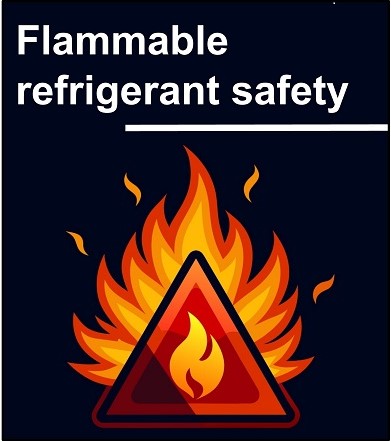Flammable refrigerant safety

Care needs to be taken when using flammable refrigerants. Propane (R290) and isobutane (R600a) are routinely used in domestic, professional and commercial refrigerators but manufacturers need to check that they are safe to use for the particular application in mind.
Standards exist to ensure that flammable refrigerants are safely used. For smaller systems that have less than 150 g of charge, the 60335 standards prescribe a physical test to determine whether a certain percentage of the lower flammable limit (LFL) could be exceeded, near a potential ignition source, if there was a leak of refrigerant.
If the refrigerant charge is greater than 150 g but lower than an upper limit (approximately 500 g for propane and 1.2 kg for A2L refrigerants) then additional tests must be applied to assess the area around the appliance or cabinet for safety. These tests, often termed zoning tests, are part of the relatively new BS EN IEC 60335-2-89:2022&A11:2022[1] test standard. To be able to carry out the zoning tests requires a test room with a range of allowable floor areas that is related to the quantity and type of refrigerant. The height of the room and temperature in the room are also specified as well as the air velocity. This requires a relatively specialised room that can be adjusted to comply with the required floor area for a particular appliance/cabinet whilst still maintaining temperature and air flow.
As the BS EN IEC 60335-2-89:2022&A11:2022 test standard becomes more widely used and refrigerant charges of above 150 g are used there is a growing need to be able to test the safety of these appliances. At RD&T we are able to carry out both the internal leakage tests and also the zoning tests for cabinets up to 2.5 m in length.
EN IEC 60335-2-89:2022&A11:2022 was published in the Official Journal of the European Union in August 2023 and so is now a harmonised standard. Harmonised standards provide technical specifications which are considered suitable or sufficient in order to comply with the technical requirements given in EU legislation. Technical requirements in EU legislation are mandatory, while the use of harmonised standards is usually voluntary.
If you would like any help or advice related to flammable refrigerant safety, then please contact Alan Foster (alan.foster@rdandt.co.uk) at RD&T.
[1] Household and similar electrical appliances – Safety – Part 2-89: Particular requirements for commercial refrigerating appliances and ice-makers with an incorporated or remote refrigerant unit or motor compressor